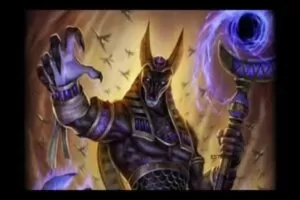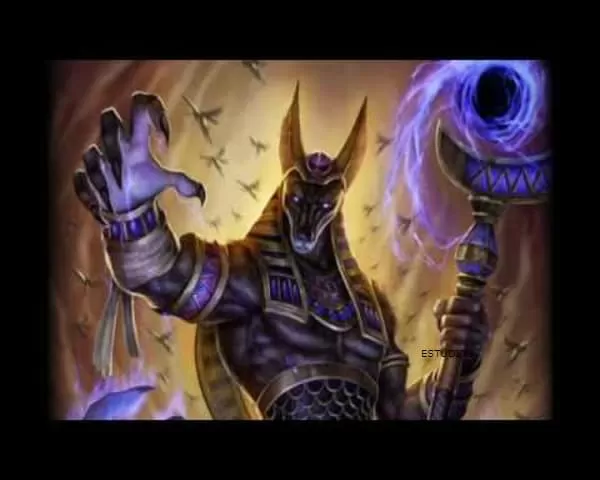Meaning of the God Anubis
Anubis, Egyptian God of the Dead and the Underworld
As the god of embalming and the dead, the afterlife and lost souls, Anubis is one of the most prominent and mystical gods of ancient Egypt. He was known from the earliest periods in the history of the civilization that was based near the Nile River.
It is interesting to note, however, that the name “Anubis” was unknown before the Greeks arrived in Egypt. In the ancient Egyptian language, it was called Anpu or Inpu. This name has the same root as a word meaning “royal child”. In addition, it is also related to the word “inp”, which means “to decay”. Anubis was also known as “Imy-ut” (“He who is in the place of embalming”) and “nub-tA-djser” (“lord of the sacred land”).
Who is the god Anubis ?
He had many epithets besides “First of the Westerners” and was also known as “Lord of the Sacred Land” (which refers to the desert area where the necropolises were located). “He who stands on his sacred mountain” (which refers to the cliffs surrounding a given necropolis where wild dogs and jackals would gather).
“Ruler of the Nine Arches” (a reference to the phrase used for the traditional enemies of Egypt who were depicted as nine captives bowing to the king). “The dog that swallows millions” (simply referring to his role as a god of death), “Master of secrets” (as he knew what awaited beyond death).
“He who stands at the place of embalming” (indicating his role in the mummification process), and ” First of the divine booth ” As evidenced by his various epithets, Anubis was instrumental in all aspects of an individual’s death experience in the role of protector and even stood with the soul after death as a righteous judge and guide.
Anubis helped judge the dead and he and his army of messengers were charged with punishing those who violated tombs or offended the gods. He was especially concerned with controlling the impulses of those who sought to sow disorder or align themselves with chaos. Anubis was the god who helped embalm Osiris after he was killed by Seth. Thus, Anubis was the god who oversaw the mummification process of people when they died. Priests often wore a mask of Anubis during mummification ceremonies.
What Attributes Does the God Anubis Have ?
- Anubis was seen as a man with the head of a jackal or completely in the form of a jackal.
- Anubis’ skin is often depicted as black, while jackals are typically brown.
- The reason is that the color black is a symbol of death, but also a symbol of the fertile, black soil of the Nile.
- Anubis wore many hats as the god of the afterlife.
- He is depicted as a black canine, a dog-jackal hybrid with pointed ears, or as a muscular man with the head of a jackal. The color black was chosen for its symbolism, not because Egyptian dogs or jackals were black.
- Black symbolized the decomposition of the body and the fertile soil of the Nile River valley, which represented regeneration and life.
- The powerful black canine, then, was the protector of the dead who ensured that they received their due rights in burial and supported them in the afterlife to aid in their resurrection.
- In this capacity, he was associated with eternal justice and maintained this association later, even after he was replaced by Osiris.
What is the Power of the God Anubis ?
- Protector of tombs: as the Egyptian god responsible for protecting the dead, many prayers to Anubis were engraved on their tombs. Anubis maintained this role until Osiris gained popularity and took over.
- This “super canid” offered people the assurance that their body would be respected at death, that their soul would be protected in the afterlife and that they would receive a fair trial for their life’s work. These are the same assurances sought by people today, and it is easy to understand why Anubis was such a popular and enduring god.
- His image is still among the most recognizable of all Egyptian gods, and replicas of his statues and tomb paintings remain popular, especially among dog owners, today.
History of the God Anubis
In the Early Dynastic Period (c. 3150-2613 BC) and in the Old Kingdom (c. 2613-2181 BC) Anubis was the sole Lord of the Dead and the righteous judge of the soul, but as the myth of Osiris became more popular, the latter god increasingly took on the attributes of Anubis.
However, Anubis remained a very popular god, so he was assimilated into the Osiris myth by discarding his previous parentage and history and making him the son of Osiris and Nephthys born of their affair. According to this story, Nephthys (Set’s wife) was attracted to the beauty of Osiris (Set’s brother) and transformed herself to resemble Isis.(Osiris’ wife). Osiris slept with Nephthys and became pregnant with Anubis, but abandoned him shortly after his birth for fear that Set would discover the affair.
Isis found out about the affair and went looking for the baby, and when she found him, she adopted him as her own. Set also found out about the affair, and this is given as part of the reason for his murder of Osiris. After his assimilation into the Osiris myth, Anubis was regularly seen as the protector and “right hand man” of Osiris who guarded the god’s body after death, oversaw mummification, and assisted Osiris in judging the souls of the dead.
Anubis was regularly called upon (as amulets, tomb paintings and written works attest) for protection and vengeance; especially as a powerful ally in enforcing curses placed on others or defending against those curses. Although Anubis is well represented in art throughout Egyptian history, he does not play a major role in many myths.
His early role as Lord of the Dead, prior to assimilation into the Osiris myth, was static in that he only played a single solemn function that did not lend itself to elaboration. As the protector of the dead, who invented mummification and preservation of the body, he seems to have been considered too busy to be involved in the kind of stories told about the other Egyptian gods.
References to Anubis are found in texts dating back to the Old Kingdom. His fame lasted until the Middle Kingdom, when Osiris assumed the role of god of death and Anubis became Osiris’ attendant. In ancient Egypt, jackals ruled the cemeteries. They dug up the newly buried and tore their flesh and ate it.
Historians believe this is what led the ancients to depict the god of the afterlife as a jackal, to fight fire with fire. New genetic research indicates that the ancient Egyptian jackal is not a jackal at all, but an ancient wolf. In very ancient history, Anubis was known to be the absolute ruler of the underworld (called Duat).
Origin of Anubis
There are several versions of how Anubis was born:
- Son of Nephthys and Osiris: the most popular version is that Anubis is the son of Nephthys and Osiris. As the goddess of darkness, Nephthys would naturally be the mother of a god who oversaw the embalming process and also guided souls to the afterlife.
- Son of Nephthys and Seth: Seth is also speculated to be the father of Anubis. In this version, it is believed that Nephthys disguised herself as Osiris’ beautiful sister Isis to beget a half-brother for Horus. Since Seth is the god of darkness, storms and destruction, it is easy to see how Anubis could be his son.
- Son of Nephtys and Ra: In early mythology texts, Ra (the sun god), was depicted as the father of Anubis, while his mother was speculated to be Hesat, the cow goddess, Bastet, the cat-headed goddess of war, or Nephthys.
- Apart from the statue of Anubis discovered in the tomb of King Tut, his depiction can be found frequently in ancient Egyptian art. In the Valley of the Kings, an image of Anubis in his role as the “Jackal Ruler of the Arches” was often used to seal tombs.
The nine arches represented all of Egypt’s enemies, and Anubis was believed to have defeated them all. In museums today there are masks and statuettes of Anubis dating from the early to late Ptolemaic period (332-30 BC).
Myths About the God Anubis
The Guardian of the Scales
One of his many roles around the dead included the Keeper of the Scales, where he dictated the fate of souls. As shown in the Book of the Dead, Anubis weighs the heart of the deceased against the weight of a feather.
The feather represents “ma’at” or truth. If the scale of justice were inclined toward the heart, the dead person would be consumed by Ammit, a female demon whom the ancient Egyptians called “devourer of the dead.” If the scale of justice inclined toward the pen, Anubis would take the deceased to Osiris so that he or she could ascend to a dignified existence in heaven.
The God of Embalming and Mummification.
Anubis had the important role of overseeing the embalming and mummification of the dead. Anubis’ daughter (Kebechet), is often seen as his assistant in the process of mummification of the dead.
The ancient Egyptians believed that Anubis smelled the bodies of the dead, so they preserved them with sweet-smelling plants and herbs. Anubis also assisted in the ritual of “opening the mouth” to ensure a good burial. This ritual was performed so that the dead person could eat and speak in the afterlife.
How did Anubis become the god of embalming ?
The mythology of the story varies, but according to legend:
- Osiris’ brother (Seth), killed Osiris by luring him into an elegant coffin, closing it and pushing it into the Nile.
- Osiris’ wife and sister (Isis), recovered Osiris’ body on the Phoenician coast, but an angry Seth cut up Osiris’ body and scattered it all over Egypt.
- Anubis, Isis and Nephthys, set out to find the pieces and succeeded (except for Osiris’ phallus).
- Another Egyptian god named Thoth helped restore the body and Anubis wrapped Osiris in linen, which action gave him the title.
Anubis and Set
A story recorded in the first millennium BC tells how the evil god Set disguised himself as a leopard to approach the body of Osiris. He was captured by Anubis and branded with a hot iron. This, according to Egyptian myth, is how the leopard got his spots. Anubis then skinned Set and used his bloody skin as a warning to evildoers. In this era, Anubis was said to command an army of demonic messengers who inflicted suffering and death.
Sons of the god Anubis
Anubis’ wife is named Anput and has the body of a woman and the head of a jackal. Together they have a daughter named Kebechet, who is the goddess of purification. Their daughter is qebhet (also known as Kabechet) who brings cold water to the souls of the dead in the Hall of Truth and consoles the recently deceased.
Temples of the god Anubis
Anubis was worshipped throughout Egypt, and his center of worship was at Cynopolis, located in the 17th nome (province) of Upper Egypt. Translated, Cynopolis is Greek for “city of the dog,” which fits well because of the close relationship between jackals and dogs, and the fact that some scholars believe Anubis was actually an ancient wolf.
A shrine to Anubis was discovered in the tomb of King Tut in 1922. Made of wood, plaster, lacquer and gold leaf, the statue depicts Anubis in the form of an animal in a reclining position exactly as it is in his hieroglyph. As the sled on which he rested would indicate, the shrine was probably used in the funeral procession of the great pharaoh, and was oriented westward to help guide the pharaoh into the afterlife.
The priests of Anubis were men and often wore masks of the god made of wood to perform rituals. The center of the god’s worship was in Upper Egypt at Cynopolis (“the city of the dog”), but there were shrines to him throughout the land and he was universally venerated in all parts of the country.
Scholar Richard H. Wilkinson writes:
The chapel of Anubis in the temple of Hatshepsut.at Deir el-Bahri may have given continuity to an earlier shrine of the god in that area and provides an excellent example of the god’s continuing importance long after his assimilation into the cult of Osiris.
Because he was said to have prepared the mummy of Osiris, Anubis became the patron god of the embalmers and at the Memphite necropolis an area associated with the embalmers appears to have become a focal point for the cult of Anubis in the Late and Ptolemaic Period.
It has been referred to as ‘the Anubeion’ by modern Egyptologists. Masks of the god are known, and priests representing Anubis in mummy preparation and funerary rites may have used these jackal-headed masks to impersonate the god. They were certainly used for processional use, as this is depicted representatively and mentioned in late texts.
The many two- and three-dimensional depictions of Anubis that have survived from funerary contexts indicate the great importance of the god in this aspect of Egyptian religion, and amulets of the god were also common.
Anubis Facts:
- Anubis was the god of the dead and the underworld until the Middle Kingdom, when Osiris assumed this role.
- He is one of the oldest gods, references in the text go all the way back to the Old Kingdom.
- Anubis is the inventor and god of embalming and mummification.
- He guided death through the underworld (called Duat).
- Anubis was the Keeper of the Scales, used to weigh the hearts of dead souls.
- His high level of anatomical knowledge due to embalming made him the patron of anesthesiology.
- A squatting statue of Anubis occupied a central place in Tutankhamun’s tomb.
- The priests who performed embalming of corpses wore a jackal mask.
- Greek mythology combines Hermes with Anubis to give rise to the god Hermanubis.
Related Topics
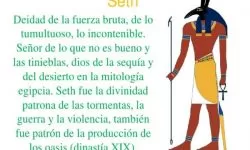
SETH GOD: Egyptian of Death, Confusion and Caos
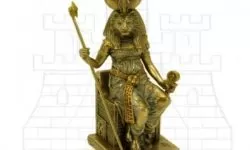
GODDESS SEKHMET: Goddess of Divine Vengeance, Conquest and War
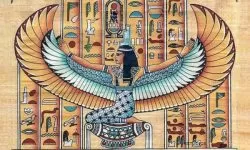
GODDESS ISIS: Symbol, Meaning, Facts and Images

AMUN RA GOD: Who Is ? Myths and Powers
Other Gods of Mythology in ALPHAPEDIA
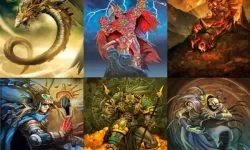
AZTEC GODS: List of Names, Meanings and Powers
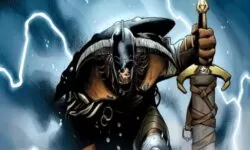
NORSE GODS: Names, Meaning, Powers and History

THE GODDESSES OF MYTHOLOGY: Their Names and Meanings
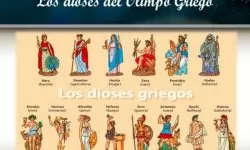
OLIMPUS GODS: ¿ Who Are ? ¿ What Are ? Names and Powers
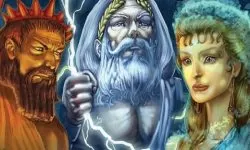
GREEK GODS: Names, Family Tree and Their Powers
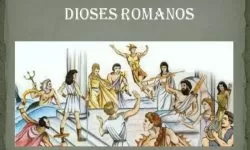
ROMAN GODS: Names, Meanings and Characteristics
Other Topics of Interest in ALPHAPEDIA

BEST UNIVERSITIES IN COLOMBIA: Courses, Diplomas, Bachelor’s Degrees, Master’s Degrees and Doctorates

FREE BACHELOR DEGREE IN DENTISTRY

FREE MASTER DEGREE IN ELECTRICAL ENGINEERING

FREE POSITIVE PSYCHOLOGY COURSE

FREE MASTER DEGREE IN PUBLIC MANAGEMENT

FREE BACHELOR IN BIOIMAGING
Images, Pictures or Drawings of the God Anubis
